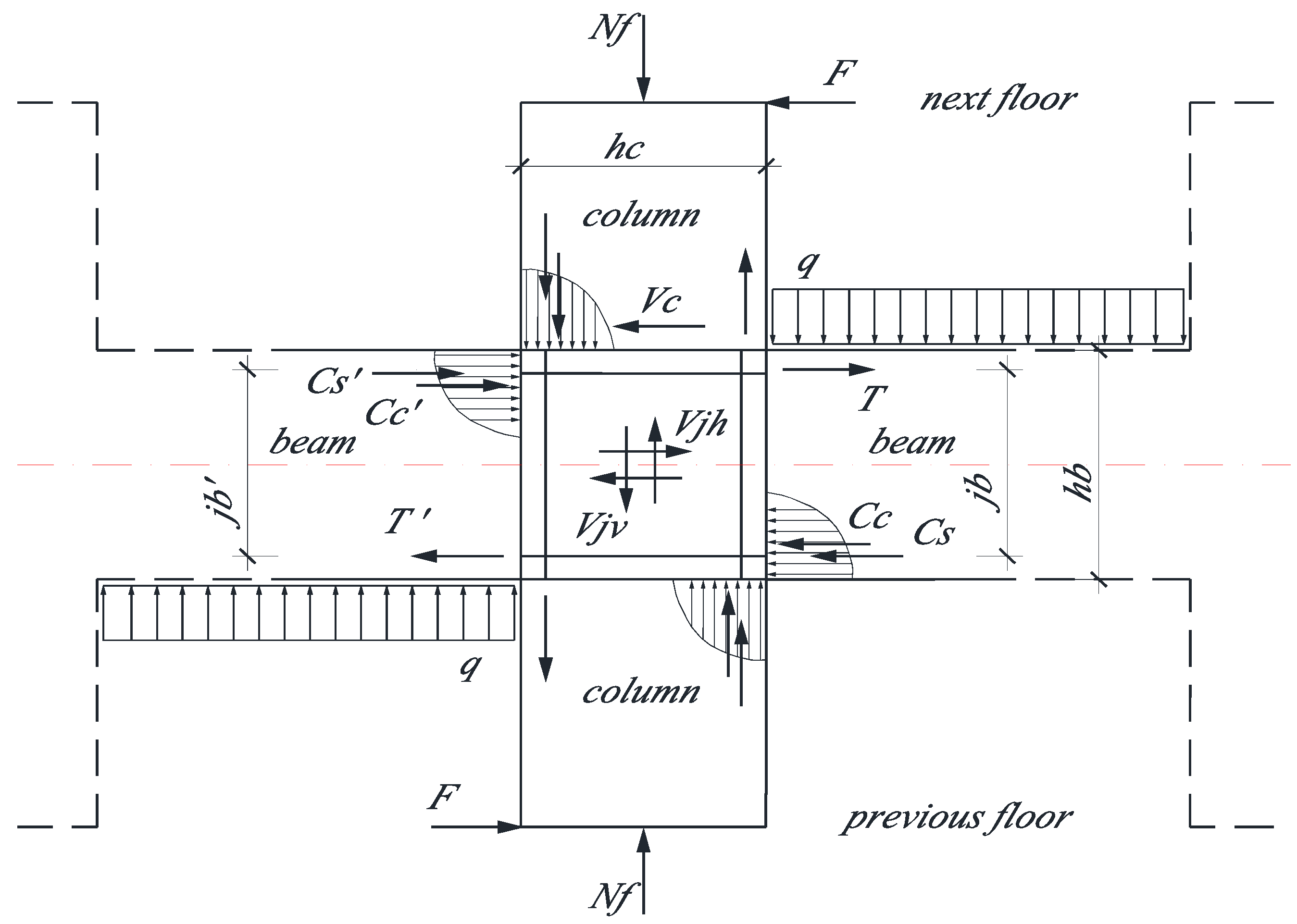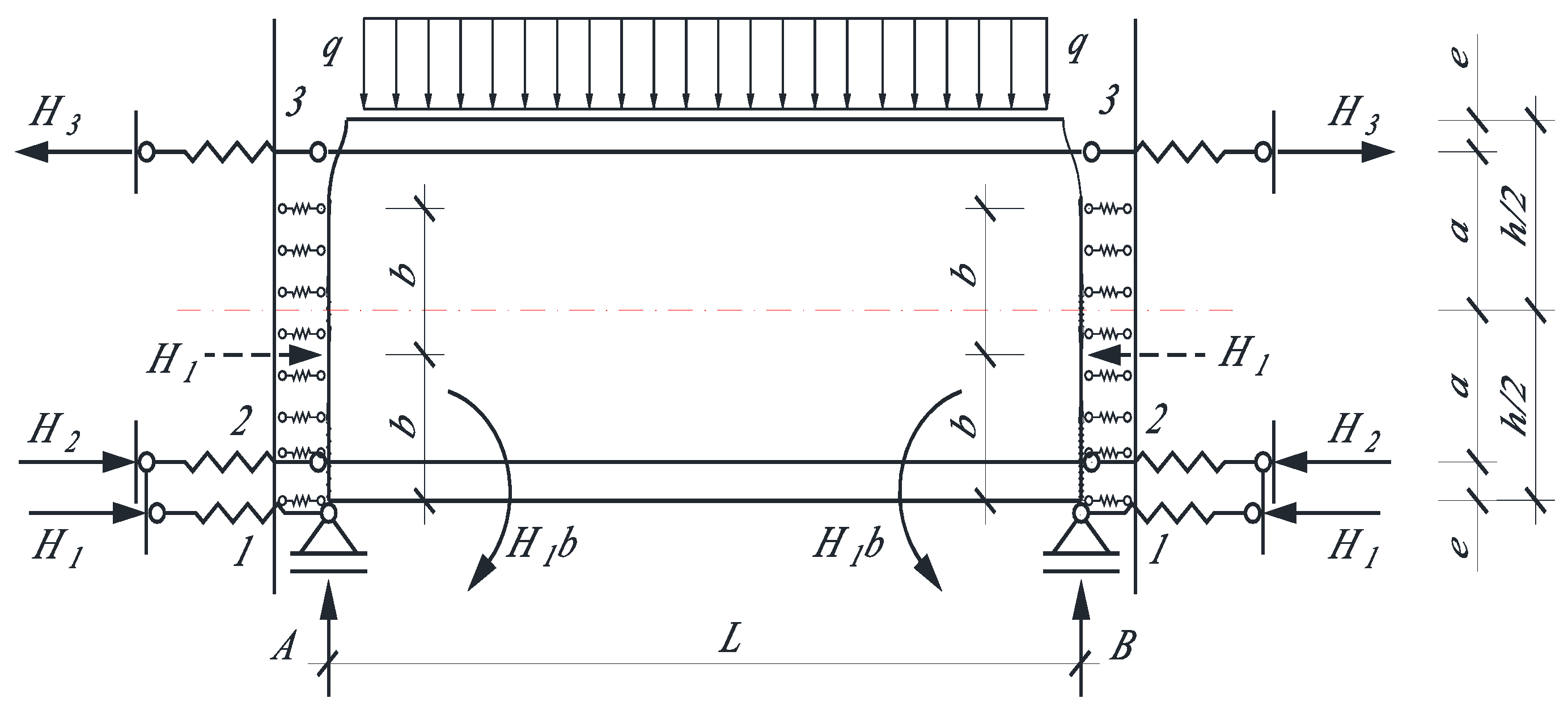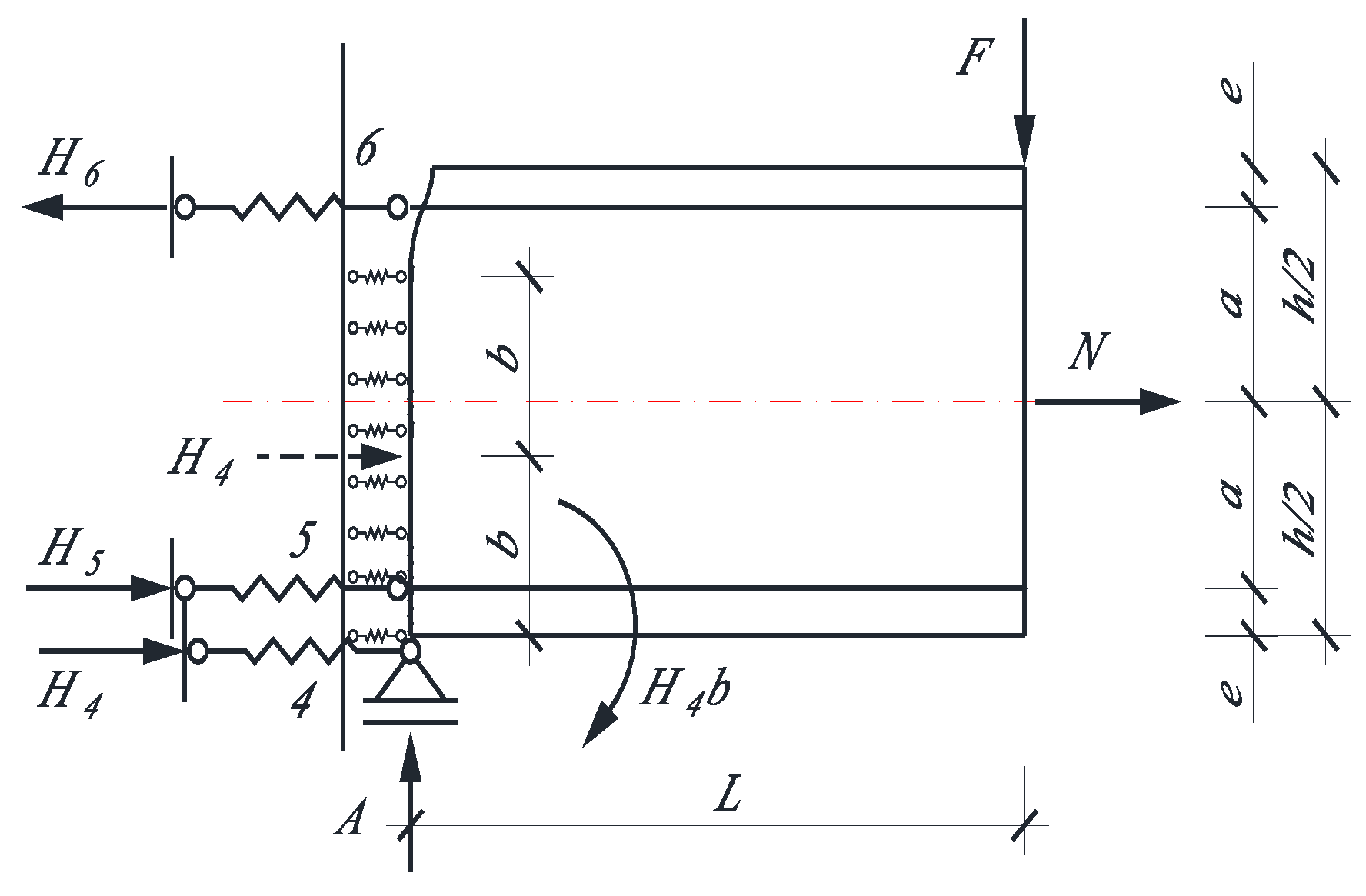Distribution of Forces in RC Interior Beam–Column Connections †
Abstract
:1. Introduction
2. Materials
3. Method
3.1. Simple Beam-Support Reactions
3.2. Cantilever Beam-Support Reactions
4. Results and Discussion
4.1. Comparison of the Results of (2) and (9) (Figure 5)

4.2. Comparison of the Results of (3) and Figure 4
5. Conclusions
Funding
Institutional Review Board Statement
Informed Consent Statement
Data Availability Statement
Conflicts of Interest
References
- Hanson, N.W.; Connor, H.W. Seismic Resistance of Reinforced Concrete Beam-Column Joint. J. Struct. Div. 1967, 93, 533–560. [Google Scholar] [CrossRef]
- Park, R.; Keong, Y.S. Test on structural concrete beam-column joints with intermediate column bars. Bull. N. Z. Natl. Soc. Earthq. Eng. 1979, 12, 189–203. [Google Scholar] [CrossRef]
- Paulay, T. Equilibrium criteria for reinforced-concrete beam-column joints. ACI Struct J. 1989, 86, 635–643. [Google Scholar]
- Park, R. A Summary of Results of Simulated Seismic Load Tests on Reinforced Concrete Beam-Column Joints, Beams and Columns with Substandard Reinforcing Details. J. Earthq. Eng. 2002, 6, 147–174. [Google Scholar] [CrossRef]
- Shafaei, J.; Zareian, M.S.; Hosseini, A.; Marefat, M.S. Effects of joint flexibility on lateral response of reinforced concrete frames. Eng. Struct. 2014, 81, 412–413. [Google Scholar] [CrossRef]
- Ramaglia, G.; Lignola, G.P.; Fabbrocino, F.; Prota, A. Unified Simplified Capacity Model for Beam-Column Joints into RC Moment Resisting Frame. Appl. Sci. 2022, 12, 10709. [Google Scholar] [CrossRef]
- Guo, R.; Yang, D.; Jia, B.; Tang, D. Seismic Response of GFRP-RC Interior Beam-to-Column Joints under Cyclic Static Loads. Buildings 2022, 12, 1987. [Google Scholar] [CrossRef]
- Ahmad, N.; Rizwan, M.; Ilyas, B.; Hussain, S.; Khan, M.U.; Shakeel, H.; Ahmad, M.E. Nonlinear Modeling of RC Substandard Beam–Column Joints for Building Response Analysis in Support of Seismic Risk Assessment and Loss Estimation. Buildings 2022, 12, 1758. [Google Scholar] [CrossRef]
- Uma, S.R.; Jain, S.K. Seismic design of beam-column joints in RC moment resisting frames—Review of codes. Struct. Eng. Mech. 2006, 23, 579–597. [Google Scholar] [CrossRef]
- Shiohara, H. New model for shear failure of RC interior beam-column connection. J. Struct. Eng. 2001, 127, 152–160. [Google Scholar] [CrossRef]
- Doicheva, A. Off-center supported beam with additional elastic supports, located along the height of the beam and loaded with a distributed transverse load. In Proceedings of the XXIII International Scientific Conference VSU’2023, Sofia, Bulgaria, 22–24 June 2023; Volume I, pp. 451–460. (In Bulgarian). [Google Scholar]
- MATLAB R2017b; The MathWorks Inc.: Natick, MA, USA, 2017.
- Doicheva, A. Determination of the Shear Force in RC Interior Beam-Column Connections. Eurasia Proc. Sci. Technol. Eng. Math. 2023, 23, 361–371. [Google Scholar] [CrossRef]
- Faisal Hayat Khan, M.; Tahir, F.; Khan, Q.u.Z. Numerical simulation and performance evaluation of beam column joints containing frp bars and wire mesh arrangements. J. Mech. Contin. Math. Sci. 2021, 16, 112–130. [Google Scholar]





Disclaimer/Publisher’s Note: The statements, opinions and data contained in all publications are solely those of the individual author(s) and contributor(s) and not of MDPI and/or the editor(s). MDPI and/or the editor(s) disclaim responsibility for any injury to people or property resulting from any ideas, methods, instructions or products referred to in the content. |
© 2023 by the author. Licensee MDPI, Basel, Switzerland. This article is an open access article distributed under the terms and conditions of the Creative Commons Attribution (CC BY) license (https://creativecommons.org/licenses/by/4.0/).
Share and Cite
Doicheva, A. Distribution of Forces in RC Interior Beam–Column Connections. Eng. Proc. 2023, 56, 114. https://doi.org/10.3390/ASEC2023-15293
Doicheva A. Distribution of Forces in RC Interior Beam–Column Connections. Engineering Proceedings. 2023; 56(1):114. https://doi.org/10.3390/ASEC2023-15293
Chicago/Turabian StyleDoicheva, Albena. 2023. "Distribution of Forces in RC Interior Beam–Column Connections" Engineering Proceedings 56, no. 1: 114. https://doi.org/10.3390/ASEC2023-15293
APA StyleDoicheva, A. (2023). Distribution of Forces in RC Interior Beam–Column Connections. Engineering Proceedings, 56(1), 114. https://doi.org/10.3390/ASEC2023-15293





